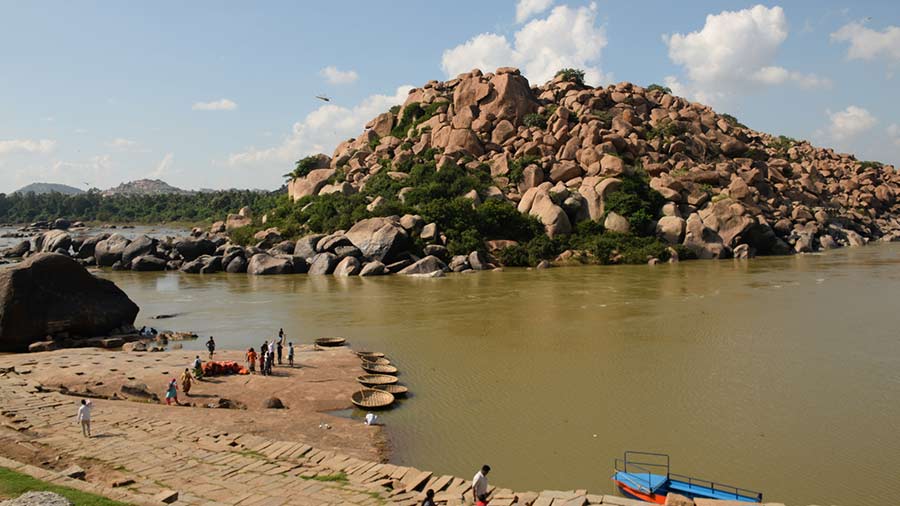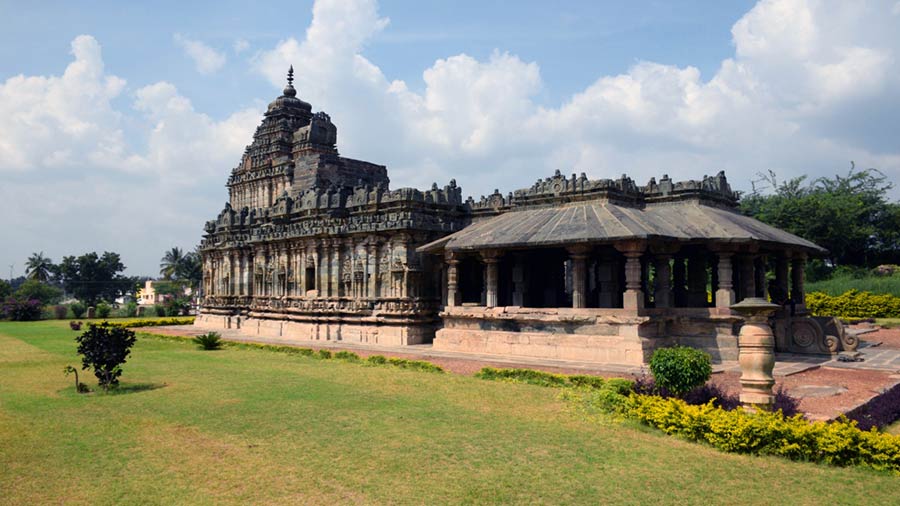There are multiple Buddhist heritage sites strewn across Odisha. While the popular ones are visited by tourists, there are several places that are still relatively obscure and not considered popular tourist sites. One such place is Bajragiri. While other nearby sites of Lalitgiri, Ratnagiri and Udayagiri are considered part of the 'Diamond Triangle', and are very popular, Bajragiri somehow remains out of the tourist map.
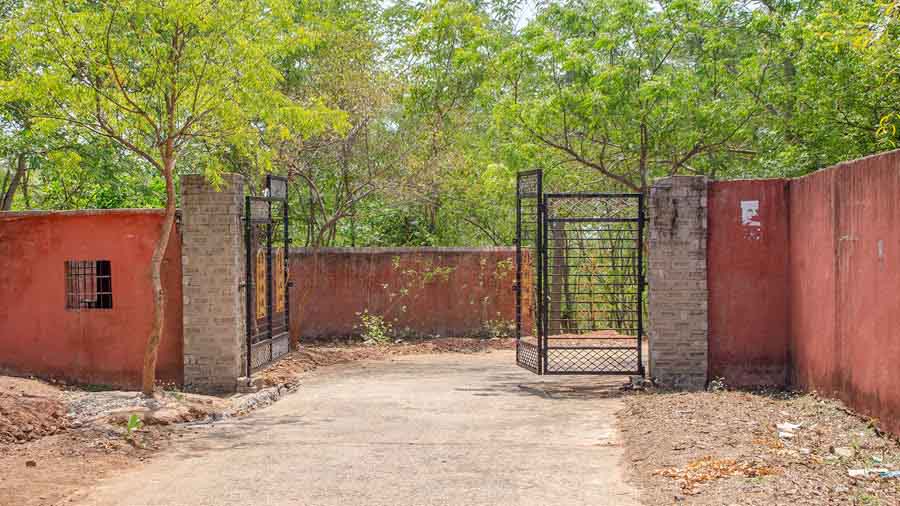
Main-entrace to Bajragiri Mahavidyalaya School Compound
Reaching Bajragiri is another big challenge — as the only way to reach this place from Bhubaneswar is by a hired car. While the nearest railhead is Jajpur, there is no transportation available from the station to bring you to this place. So, whether you travel from Bhubaneswar or Jajpur, you need to hire a car to reach this place.
Bajragiri comprises two sites that can be visited by tourists, one on top of a hill and the other down in the village at the foot of the hill. The site on top of the hill is now part of a school premise (Bajragiri Mahavidyalaya). So, don’t be surprised if you have school students staring at you when you explore this place.
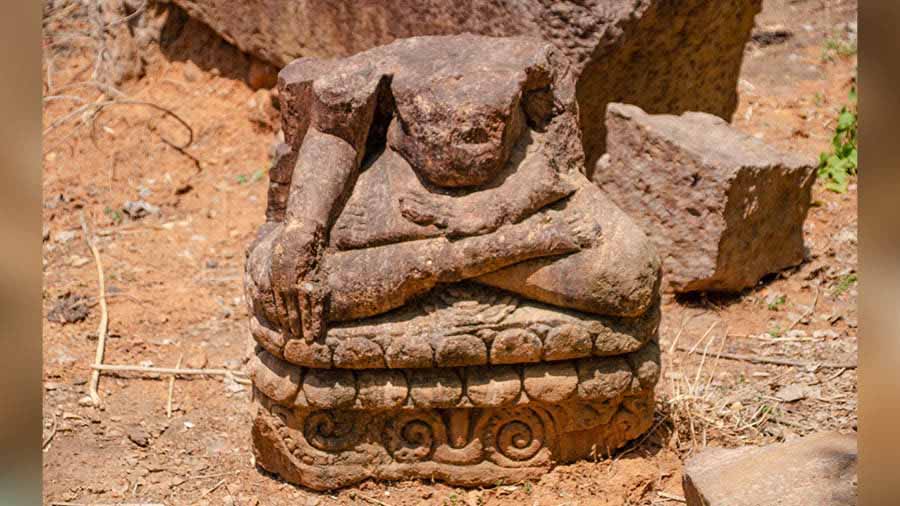
A headless Buddha sculpture at Bajragiri
It was a common practice for Buddhist monks to build their monasteries on top of hills. This gave them a height advantage of knowing of any approaching danger. Also, the hills had always been a direction marker before maps so it was easy for guiding other monks and travelers by using hills as a pointer.

A view of Bajragiri
The monks had different names for hills and this also got associated with the monasteries that were present there. For example, we have Udayagiri, which means the hill from where the sun rises, and Pushpagiri, which means the flowering mountain. Bajragiri or the Lightning Hill got its name from fusing two words ‘Bajra’ which means lightning and ‘Giri’ meaning mountain.
The teaching staff, including the principal of the school, are very cooperative and they encourage visitors to look around the school premises. They would even help you by pointing out the direction of some of the archeological remains that still can be found scattered around the top of the hill. The teaching staff informed us that to protect the scattered pieces they collected all of these from different parts of the hill and kept them together at one spot within close proximity of the school.

Designs carved on stone blocks
Inside the school compound, you will be able to find around six to eight such pieces of stone located in one corner of the field. Mostly covered by heavy vegetation, it can easily be missed but the enthusiastic students of the school including the teachers would help spotting these. You will find a couple of votive stupas and one sculpture panel of Buddha. The top of the hill has not been excavated and if done in the future, then there are chances that much more can be found.
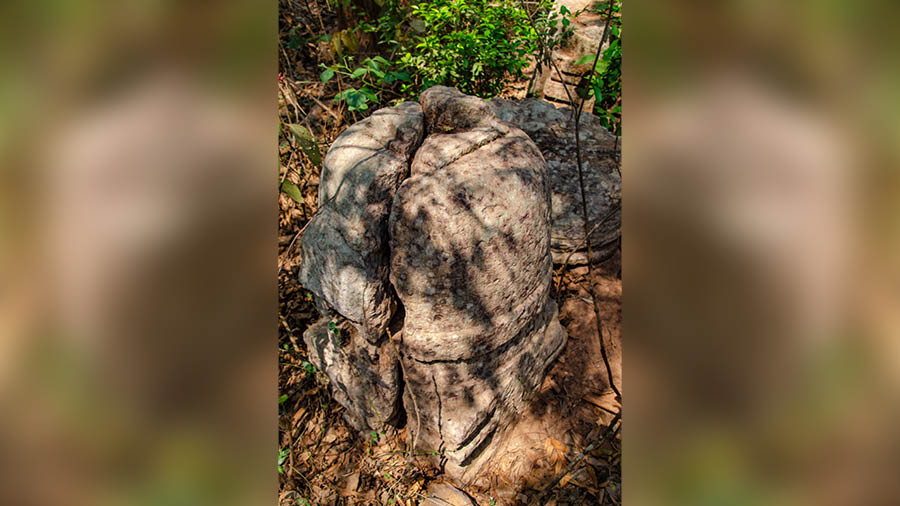
Votive stupa at Bajragiri
The next stop is the village at the foot of the hill, where excavation was done by ASI (Archaeological Survey of India) a few years back and the site contains lots of artifacts. The site was once properly demarcated and a board placed at the gate but now the gates are barely standing and the information board has long gone.
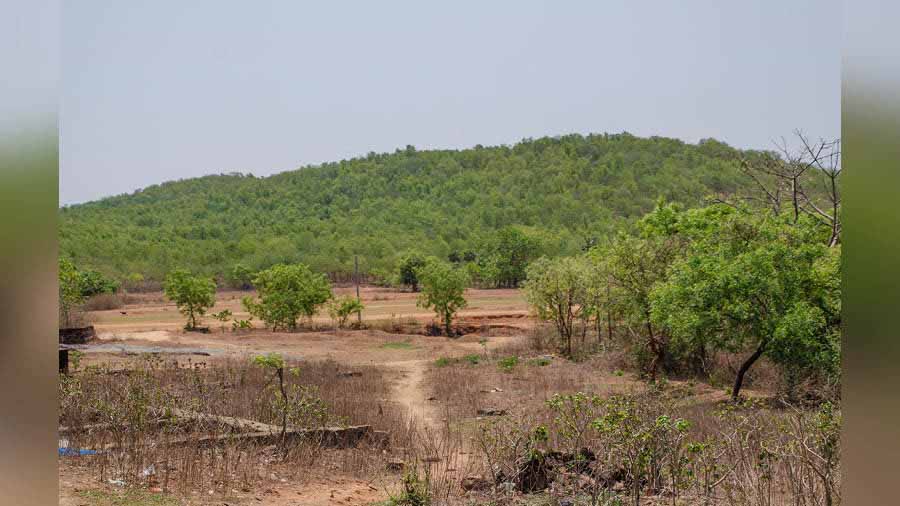
A view of the Bajragiri Hill from the village
Once inside, one can see foundation stones and other large geometrically shaped stone blocks indicating that these were once part of a larger structure. The slabs feature floral patterns which can also be seen at other Buddhist sites nearby. Usually, near a monastery, one would also build a stupa and this could have been what remains of that stupa. The most significant piece of object out here is the headless Buddha panel.
From the village, one can see Pushpagiri Hill and one might think about how these two sites would have looked when it was fully functional with a large monastery on top of the hill and the stupa at the bottom of the hill.
How to reach Bajragiri
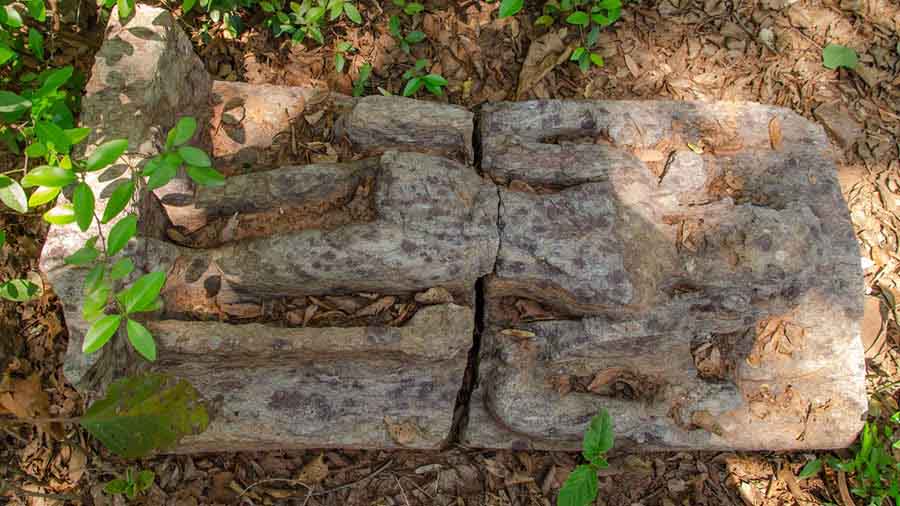
A stone sculpture of Buddha
Travel tips
- It will take around two hours to cover both sites at Bajragiri.
- Monsoon season is best to be avoided as the unpaved roads would become difficult to drive on.
- There are no proper eateries or shops around there so it’s best to carry snacks and water.
- It’s advisable to visit this place during the daytime and make your return journey by 4 pm.
- Even with maps on your mobile pointing towards Bajragiri, it is advisable to ask villagers on the way as many roads show on the map but are dead ends.
Working for more than a decade in the book retail & publishing industry, Subhadip Mukherjee is an IT professional who is into blogging for over 15 years. He is also a globetrotter, heritage lover and photography enthusiast.

